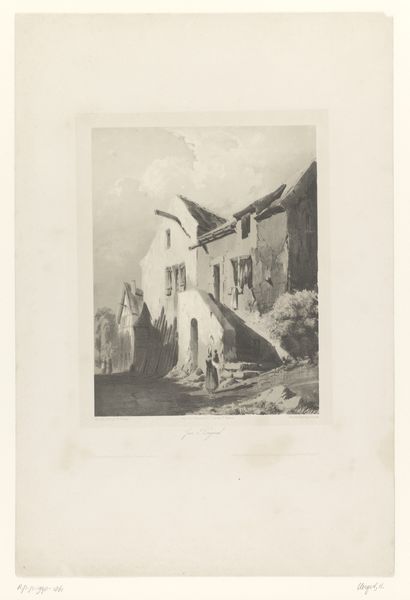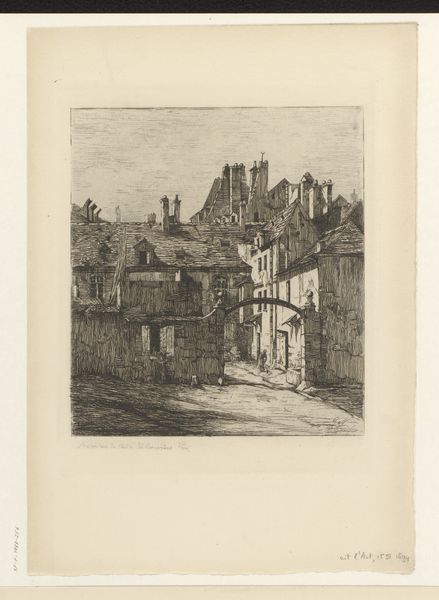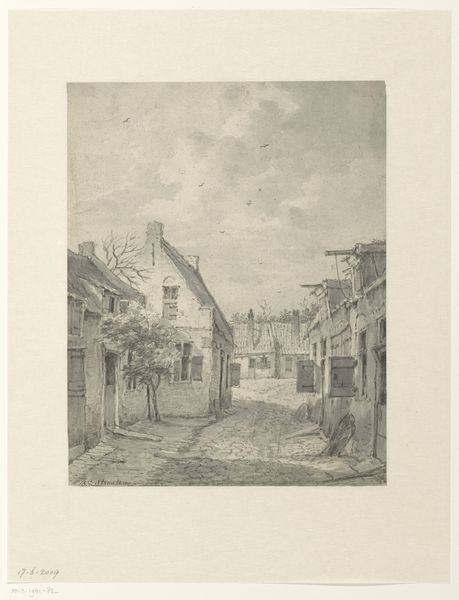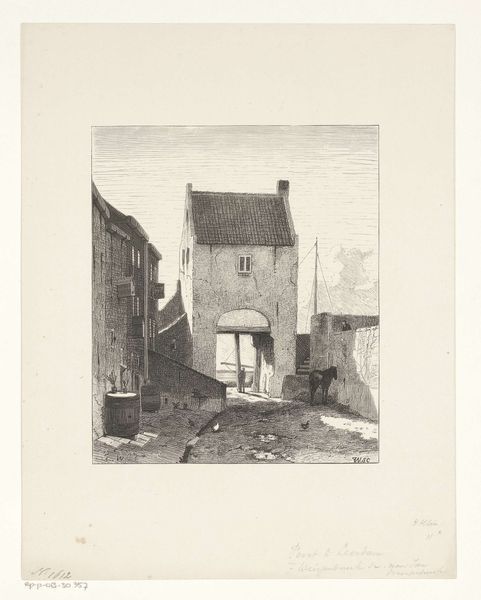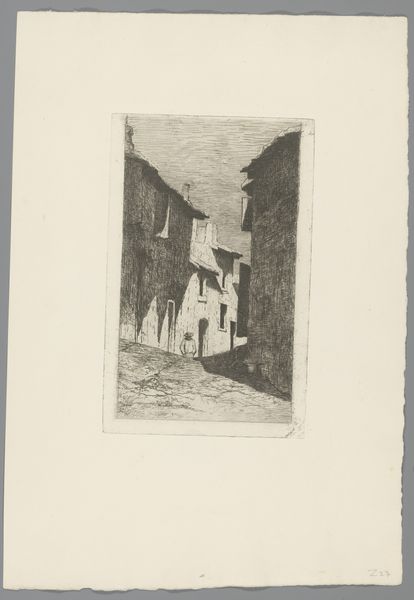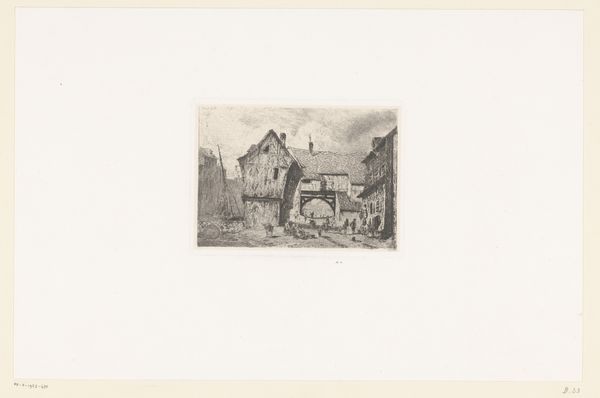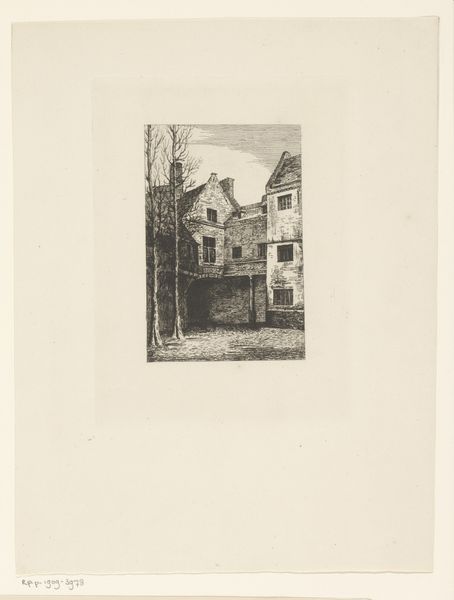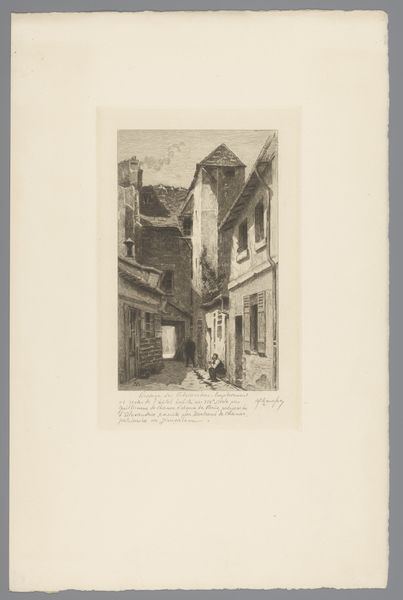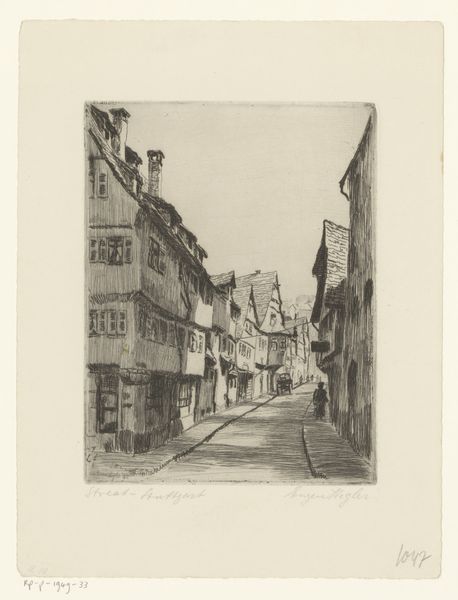
print, etching, architecture
# print
#
etching
#
landscape
#
genre-painting
#
architecture
#
realism
Dimensions: height 512 mm, width 342 mm
Copyright: Rijks Museum: Open Domain
This etching of an old farmhouse facade was made by Hubert Clerget in the 19th century. Observe the wheel affixed to the wall near the door; this is a symbol of great antiquity and cultural resonance. Wheels as symbols stretch back to ancient Mesopotamia, linked with the sun god Shamash and notions of cosmic order. Think of the Zodiac wheels in medieval cathedrals, echoing similar ideas. Consider the symbolic wheel, the Rota Fortunae, depicting the capricious nature of fate, a motif found in medieval and Renaissance art. The wheel in Clerget’s etching, however, takes on a simpler meaning, hinting at agrarian life and rural industry. There's a powerful subconscious connection to our past in these symbols. The cycle of life and death, the seasons turning, are all encapsulated. This image stirs something primal, evoking the eternal return, engaging us on a profound, often unconscious, level. This wheel motif is not static; it evolves, carrying echoes of the past while adapting to new cultural landscapes.
Comments
No comments
Be the first to comment and join the conversation on the ultimate creative platform.
